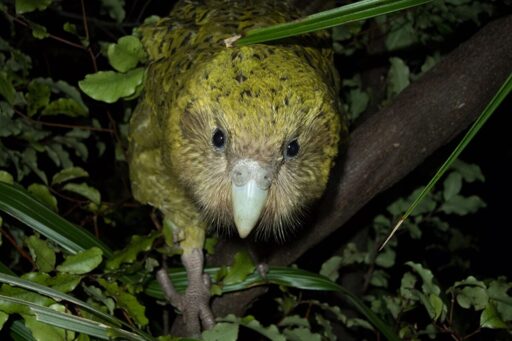Founder’s Briefs: An occasional series where Mongabay founder Rhett Ayers Butler shares analysis, perspectives and story summaries. In the mid-1990s, the kākāpō seemed destined for extinction. Only 51 individuals of the flightless, nocturnal parrot remained, all of them descended from a shrinking gene pool and spread across remote corners of New Zealand. A victim of its own evolutionary success, the kākāpō had once flourished in a predator-free island ecosystem. But its defenses—freezing when threatened, nesting on the ground, and producing a strong scent—proved fatal once humans introduced cats, rats, and stoats. Against these odds, the kākāpō recovery has become one of conservation’s most carefully managed comebacks. The entire population is now named, monitored, and fitted with smart transmitters. Breeding, which occurs only during occasional mast years when native trees fruit heavily, is bolstered by artificial insemination and precision feeding. Drones ferry sperm across island sanctuaries in minutes, shortening a journey that once took hours on foot. Data loggers track every movement, weight change, and mating. The results are cautiously encouraging. As of 2024, the known population stands at 244 individuals. All reside on predator-free islands, with a few reintroduced to the New Zealand mainland under close surveillance. Scientists have even sequenced the genome of every adult kākāpō, using genetic data to manage breeding pairs and reduce the risks of inbreeding. Success remains fragile. The species is still critically endangered, and low genetic diversity continues to affect fertility. Yet the recovery offers valuable lessons for other conservation efforts. The kākāpō’s survival…This article was originally published on Mongabay
From Conservation news via this RSS feed


